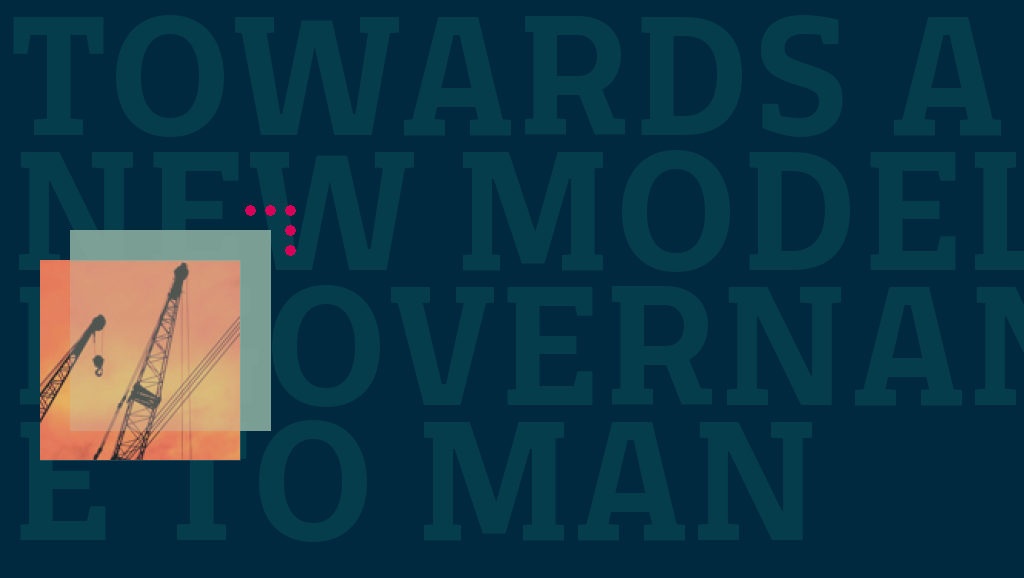Building the internal capabilities, technical architecture, service delivery, planning and contract monitoring to achieve this ambition will require a governance framework encompassing a wide spectrum of arrangements, including the measurement of cost, benefit, risk and opportunity. Whilst often the very same technologies which have enabled greater technical interconnectedness in financial markets, have simultaneously increased operational risk in those markets (Power, 2006).
Interestingly, while a number of articles and analyses can be found about the relationship between technology and organisations, few (if any) have outlined a topology of current and emergent organisational types that can be used for further empirical investigation in different settings to understand the relations between organisations (for instance between state, business and public sector organisations), the allocation of responsibility between them and how new technologies are assembling and assembled into practices of organisational governance.
We distinguish between three main types of organisations in which our model of governance can be applied, these are: federated, concentric and platform organisations. We will briefly review each in turn. Within what we can describe as federated digital networks, a league of centers of calculation accumulate inscriptions that have been produced elsewhere in order to act upon the sites of their production, linking, we would add, the digitally networked sites of their creation to places where they are accumulated and made subject to calculation.
Miller (1990) suggests that this type of calculation (or accounting) shall not be considered only as a narrowly technical mechanism for recording transactions, but ‘it is understood as a process of attributing financial values and rationales to a wide range of social practices, thereby according them a specific visibility, calculability and operational utility’ (Miller, 1990: 316). This illustrates that ‘new techniques are invented, or transferred from one domain to another and new meanings and significance are attributed to existing techniques’ (Miller & Napier 1993:631).
In an extensive case study of network coordination between Ericsson and Telia Mobile, Hakansson and Lind (2004) concluded that new technologies and accounting practices played a key role in the formation of the networks they observed in their case study. The authors found a systematic combining of accounting and new technologies with overlapping accountability and that they were considered a basic facilitating process for coordination, interconnection and to enhance the development of the relationship between the two companies of their case study.
Further, they noted that information flows between the pair was not about the routine, but was about developing concentric networks mediated by new technologies as part of a problem solving process. Interestingly they also observed that all three forms of coordination (modes of governance of hierarchy, market and network) were combined in different ways but that service, coordination mechanisms, the degree of formalisation and the inclusion and exclusion of parties was a key element to understand the formation of the dyad they observed. Accounting is thus seen as a disciplinary technology which plays a central role in the governance model we set to outline, and, we would add, also to deepen our understanding of the nature of the links that are being formed today across organisational boundaries and in news and emergent forms of organisation.
Last, but certainly not least, according to Claudio Ciborra (2004, 2006) platform organisations will constitute the backbone ICT infrastructure of choice of a globalised ‘risk society’. Platform organisations have been studied conventionally in terms of their arrangements and pricing mechanisms in relation to transaction costs and contractual arrangements between networks. On the other hand, Claudio Ciborra stresses that the notion of what constitutes a network within platform organisations is different from the notion of network as understood by transaction costs economists. In transaction cost economics, digital networks can be described as intermediate or hybrid forms of governance (e.g. Podolny and Page 1998; Powell 1990; Thorelli 1986); or as networks of organizations which act as a group of business units coordinated through a system of market mechanisms (Snow et al. 1992).; or as an alternative form of coordination with respect to a hierarchical organizational structure (Coase 1937; Malone et al. 1987; Powell 1990; Williamson 1975).
However, in platform organisations transactions and routines are present together with an higher order context where the re-architecturing of structures is frequently carried out in a way that is ‘structured yet chaotic’ based on the continuous recombination, interlinking and re-deployment of organisational resources, tasks, activities and processes constantly creating new creative interdependencies. Thus, within the networks created over platform organisations the aim is to seek the intrinsic dispositions of resources so that they can be recombined when needed more quickly and effectively. Especially during the transition necessary to redefine and reconfigure the structures and processes, for the allocation of the resources necessary for the operationalisation of such networks, including the internal restructuring of the national configurations of existing institutions (Ciborra and Navarra 2005).
The underlying rationale supporting the inadequacy of the conventional understanding of the effects of new technologies in organisations is associated with a narrow view of how new technologies are commingled in the processes of global economic integration. As a consequence, before setting up the appropriate normative standards for the use of ICT one should understand the organisational and institutional reality in which the implementation of new technologies is taking place. The three organisatinal typologies briefly sketched above are an indication of the way in which digitally interoprerable organisational structures may be developed following internationally recognised best practice. Nevertheless, the possibility of a wider variety of organisational types and issues is not excluded by this model.
The next part will discuss the risk and challenges for the creation of digitally interoperable enterprise architectures between the public and the private sectors.
















